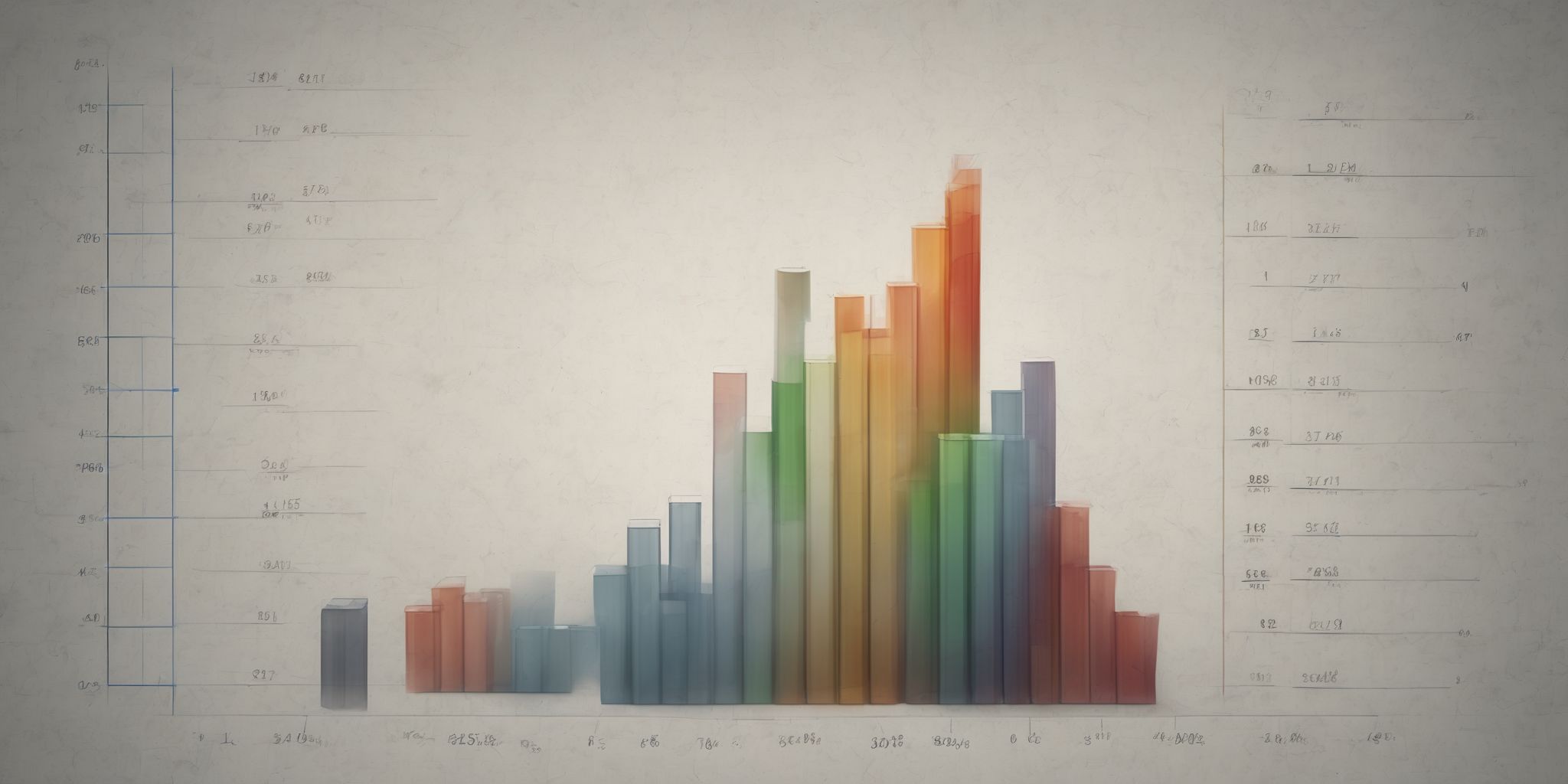Unlocking Tax Benefits: Top Deductions for Farmers
Tax season can often feel like diving into a labyrinth of confusing guidelines and enormous paperwork. But fear not, farmers of the world! While it may seem like a daunting task, navigating the world of taxes can actually present a silver lining. And no, we're not talking about finding spare change in your pockets or a magical tax fairy. We're talking about unlocking a whole array of tax deductions specifically tailored for the green thumbs and hardworking souls who tend to the lands.
So put onyour thinking caps, grab a cup of coffee, and get ready to discover the top tax deductions that can help secure your farm's financial success. Trust us, you don't want to miss out on these gems!
Overview of Tax Benefits for Farmers
Tax deductions are a significant advantage for farmers, helping to reduce their overall tax liability. These deductions are specifically tailored to address the unique circumstances and expenses faced by farmers. By taking advantage of these deductions, farmers can increase their cash flow and allocate more funds towards necessary investments.
Examples of tax deductions for farmers include the Section 179 deduction, which allows for the immediate expensing of qualifying farm equipment, and agricultural income averaging, which helps smooth out income fluctuations over several years.
Additionally, farmers can benefit from deductions related to fuel and energy usage, as well as conservation easements. Familiarizing oneself with these deductions and consulting a tax professional can lead to significant tax savings for farmers.
Tax Deductions for Farmers
Section 179 Deduction
Section 179 Deduction allows farmers to deduct the full cost of qualifying equipment purchases in the year they are placed in service, instead of depreciating them over time. Eligible expenses include machinery, vehicles, and certain livestock facilities. For instance, if a farmer purchases a tractor for $50,000, they can deduct the full amount in the year of purchase rather than spreading it over several years. This deduction helps farmers manage cash flow and reinvest in their operations.
However, there are limits to the deduction amount, which for 2021 is capped at $1,050,000. It's crucial for farmers to keep detailed records of qualifying expenses and consult with a tax professional to maximize their deductions under Section 179.
Qualifying Expenses
Qualifying Expenses: Farmers can benefit from various tax deductions by identifying and categorizing their qualifying expenses. These expenses may include seeds, fertilizers, feed, livestock, repairs, and maintenance costs for farm equipment. It is important to keep accurate records and separate personal and business expenses. For instance, fuel expenses for farming operations are deductible, while fuel for personal use is not.
Additionally, expenses associated with hiring labor, such as wages and payroll taxes, can also be deducted. By understanding the specific expenses that qualify for deductions, farmers can optimize their tax benefits and reduce their overall tax liability.
Benefits and Limitations
One significant benefit of the Section 179 deduction for farmers is the ability to deduct the full cost of qualifying equipment and software in the year of purchase, rather than spreading it out over several years. This can provide immediate tax relief and help with cash flow. However, it's worth noting that there are limitations to this deduction. The maximum amount that can be deducted is subject to an annual limit, and not all types of property are eligible.
Additionally, if the total cost of qualifying property exceeds a certain threshold, the deduction begins to phase out. Farmers should carefully consider these limitations when utilizing the Section 179 deduction to optimize their tax savings.
Agricultural Income Averaging
Agricultural Income Averaging is a valuable tax deduction for farmers. It allows them to spread out their income over a period of three years, reducing their overall tax liability. Eligible farmers can average their current year's income with the previous two years, which helps to level out fluctuations caused by unpredictable factors like weather and market conditions. For instance, if a farmer has a particularly profitable year, they can benefit from lower tax rates by averaging their income.
This deduction is especially useful for those in the agricultural industry, providing them with flexibility and potential tax savings.
Definition and Eligibility
To qualify for tax deductions as a farmer, understanding the definition and eligibility criteria is crucial. The IRS defines a farmer as an individual or entity actively involved in agricultural pursuits. Eligible farmers must have a profit motive and engage in farming activities on a regular and continuous basis. This includes activities such as cultivating soil, raising livestock, or growing crops for sale.
Additionally, farmers must meet certain income thresholds to claim specific deductions.
For example, the Agricultural Income Averaging deduction is available to farmers whose average annual income does not exceed a specified limit set by the IRS. By understanding these eligibility requirements, farmers can ensure they take advantage of the available tax deductions.
Calculating Tax Liability
Calculating tax liability is an important aspect of maximizing deductions for farmers. It involves determining the amount of tax owed to the government based on the income generated from agricultural activities. Farmers can start by keeping meticulous records of their income and expenses, including sales receipts, invoices, and receipts for eligible deductions. Then, they can use these records to accurately calculate their taxable income and claim relevant deductions.
For example, by deducting allowable expenses such as seed costs, equipment maintenance, and livestock feed, farmers can reduce their taxable income and lower their overall tax liability. Precision in tracking and documenting expenses is crucial for accurate tax calculations.
Farm Equipment Depreciation
Farm equipment depreciation is an important tax deduction for farmers. It allows them to recover the cost of their equipment over time. Farmers have the option to use accelerated depreciation methods, which allow for higher deductions in the early years of asset use. This can significantly reduce their taxable income. Alternatively, they can choose the alternative depreciation system (ADS) for slower deductions.
For example, a farmer who purchases a tractor for $50,000 can depreciate it over a set number of years, deducting a portion of its value annually. This deduction helps farmers offset the expenses of acquiring and maintaining necessary equipment for their operations.
Accelerated Depreciation Methods
Accelerated depreciation methods are valuable tax deductions for farmers. By allowing for a faster rate of depreciating farm equipment, farmers can benefit from larger deductions in the earlier years of equipment use. This helps to offset the high costs of purchasing machinery and vehicles necessary for agricultural operations.
For example, using the Modified Accelerated Cost Recovery System (MACRS), farmers can depreciate farm equipment over a shorter period, resulting in higher deductions upfront. This can significantly reduce the farmer's tax liability and improve cash flow. Implementing accelerated depreciation methods is a practical way for farmers to maximize their tax benefits and reinvest in their farming operations.
Alternative Depreciation System
The Alternative Depreciation System is an option for farmers to calculate the depreciation deductions for their farm equipment. Under ADS, farmers can depreciate their property over a longer period, typically using the straight-line depreciation method. This allows for smaller annual deductions compared to the accelerated depreciation methods.
While the ADS may result in a slower deduction of the equipment's cost, it can still be advantageous for farmers who want to spread out their tax benefits over time or have lower tax liabilities in certain years. Farmers should consider their specific financial goals and consult with a tax professional to determine if using the ADS is the right choice for their operation.
Fuel and Energy Tax Credits
Farmers can take advantage of tax credits related to fuel and energy usage, resulting in potential cost savings. These credits are available for using qualifying fuels and energy sources, such as biodiesel or solar power. By utilizing these credits, farmers can offset a portion of their fuel and energy expenses, reducing their overall tax liability. To claim the credits, farmers need to meet specific requirements outlined by the IRS.
For example, they may need to document the types and quantities of fuels used. Taking advantage of these tax credits can provide farmers with a financial incentive to adopt more sustainable and energy-efficient practices on their farms.
Qualifying Fuels and Energy Sources
To qualify for fuel and energy tax credits as a farmer, it's important to know the eligible sources. Common qualifying fuels include gasoline, diesel fuel, and propane. Renewable energy sources like biomass, ethanol, and biodiesel may also be eligible. These credits can significantly offset the cost of fuel and energy used in farming operations.
For example, if a farmer uses biodiesel to power their equipment, they may be eligible for a tax credit based on the amount of biodiesel used. It's crucial for farmers to keep accurate records and consult IRS guidelines to determine eligibility and maximize tax benefits.
Claiming the Credits
When it comes to claiming fuel and energy tax credits as a farmer, it's important to understand the qualifying criteria and the process. Eligible fuels and energy sources include biodiesel, ethanol, natural gas, and wind energy. To claim the credits, keep accurate records of fuel consumption and energy usage. Submit Form 4136 along with your tax return to report the credits.
For example, if you use biodiesel in your farming operation, you can claim a tax credit of up to $1.00 per gallon. Ensure you meet the IRS requirements and consult a tax professional for guidance.
Conservation Easements
Conservation easements provide farmers with valuable tax deductions. By voluntarily restricting certain land uses on their property, farmers can qualify for federal tax benefits. These easements aim to preserve farmland and natural resources, benefiting both the environment and the farming community. Farmers who enter into conservation easements may be eligible for income tax deductions, estate tax exclusions, and property tax reductions.
For example, if a farmer agrees to maintain their land for agricultural purposes in perpetuity, they can claim a charitable deduction based on the reduced value of the land. This can result in significant tax savings while ensuring the long-term sustainability of farmland.
Definition and Benefits
- Conservation easements are legal agreements between farmers and land trusts or government agencies that permanently restrict the development of farmland.
- By placing a conservation easement on their property, farmers can receive significant tax benefits.
- The benefits include potential income tax deductions, reduction in estate taxes, and property tax savings.
- Income tax deductions can be claimed for the value of the easement, which is determined by the difference between the land's fair market value with and without the easement.
- Farmers can also benefit from estate tax reductions as the easement lowers the overall value of their estate.
- Additionally, the reduced value of the property due to the easement can lead to lower property tax assessments.
- Conservation easements provide farmers the opportunity to protect their land while financially benefiting from tax deductions and savings.
IRS Requirements
To meet IRS requirements for tax deductions as a farmer, it's important to maintain accurate records and documentation of your farming activities. This includes detailed records of income and expenses related to your farming operation, as well as supporting documents such as receipts, invoices, and bank statements.
Additionally, you must be able to demonstrate that your farming activities are conducted with the intent of making a profit. The IRS may request information on your farming practices, marketing strategies, and financial projections. By keeping thorough records and staying organized, you can ensure compliance with IRS requirements and maximize your eligible tax deductions.
Conclusion
Farmers can take advantage of several tax deductions to reduce their tax burden. Some of the top deductions include farm equipment and machinery expenses, crop insurance premiums, and fuel and mileage costs. Farmers can also deduct costs related to livestock, such as feed and vet bills, as well as expenses for maintaining and repairing buildings and structures on their farms.
Additionally, they can claim deductions for home office expenses and healthcare costs. Farmers should keep detailed records and consult with a tax professional to ensure they are maximizing their eligible deductions and taking full advantage of the tax benefits available to them.


